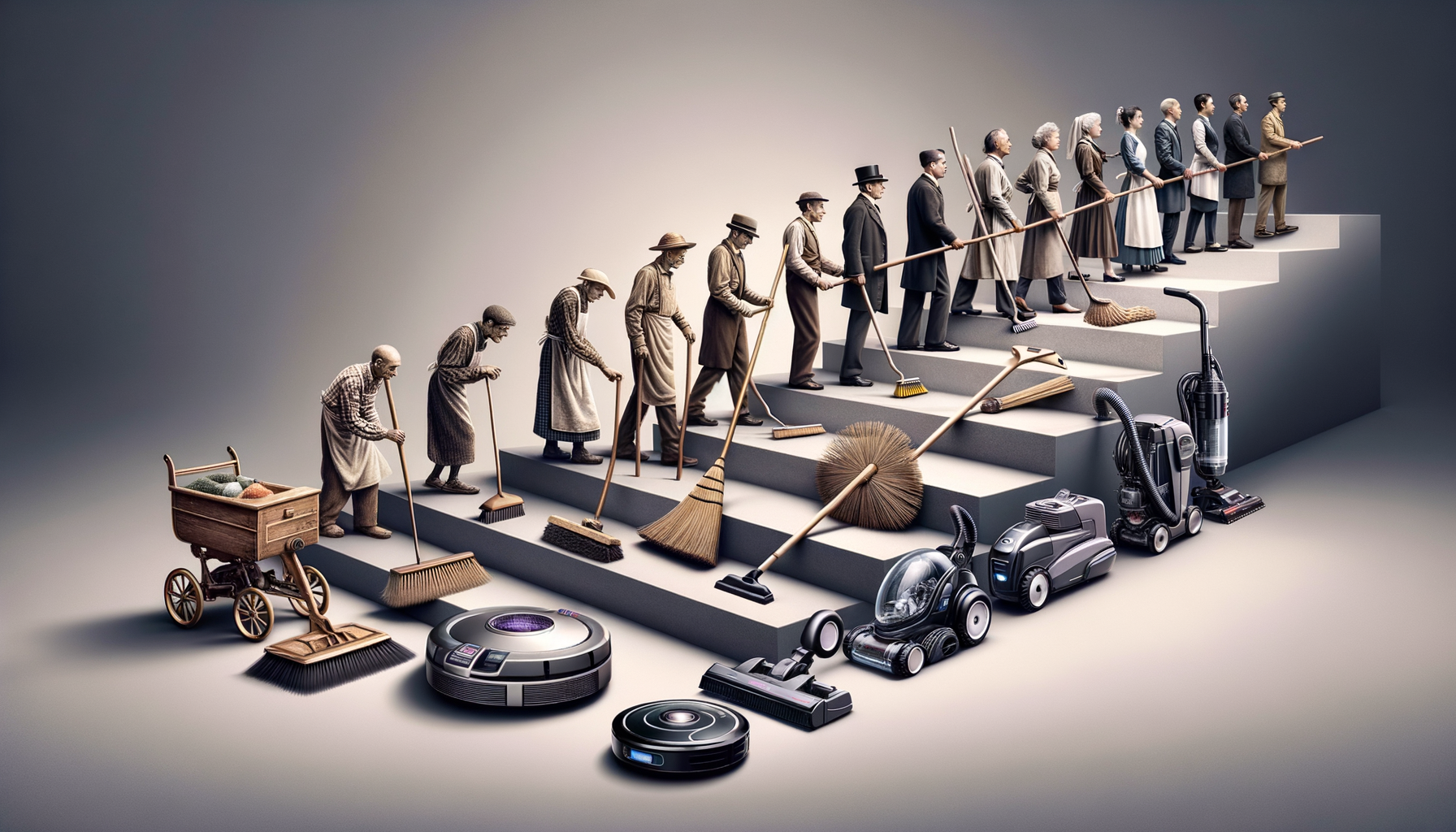Understanding the Progression and Evolution of Advanced Cleaning Equipment
Witness the significant shift in the cleaning technology landscape as advanced equipment continues to progress and adapt to modern needs.

The Evolution of Cleaning Equipment: From Manual to Mechanized
The journey from traditional cleaning methods to advanced equipment is a fascinating one, marked by significant technological milestones. Initially, cleaning was a labor-intensive process, relying heavily on manual tools like brooms, mops, and brushes. These tools, while effective to a degree, required considerable effort and time. The mechanization of cleaning began with the advent of vacuum cleaners in the early 20th century. These devices revolutionized domestic cleaning by reducing the physical labor involved and improving efficiency.
As technology progressed, so did the capabilities of cleaning equipment. The introduction of electric-powered machines allowed for more powerful and efficient cleaning solutions. Innovations such as steam cleaners and carpet shampooers provided deeper cleaning options, catering to a variety of surfaces and materials. This shift from manual to mechanized cleaning not only enhanced the effectiveness of cleaning but also improved the overall hygiene standards in both residential and commercial settings.
Today, the evolution continues with the integration of smart technologies, making cleaning equipment more intuitive and user-friendly. These advancements reflect a broader trend towards automation and efficiency in household and industrial tasks, highlighting the ongoing importance of technological innovation in the cleaning industry.
The Role of Robotics and Automation in Modern Cleaning
Robotics and automation have become integral to the development of advanced cleaning equipment. The introduction of robotic vacuum cleaners marked a significant leap forward, offering convenience and efficiency. These devices are equipped with sensors and mapping technology, allowing them to navigate spaces autonomously and clean with minimal human intervention. This not only saves time but also ensures consistent cleaning performance.
Beyond residential use, automation has found its way into industrial and commercial cleaning applications. Robotic scrubbers and sweepers are now commonplace in large facilities such as airports, shopping malls, and factories. These machines are designed to handle extensive areas, providing thorough cleaning while reducing labor costs. The use of automation in cleaning also enhances safety by minimizing human exposure to potentially hazardous environments.
The future of cleaning equipment is closely tied to advancements in robotics and artificial intelligence. As these technologies continue to evolve, we can expect even more sophisticated cleaning solutions that further enhance efficiency and effectiveness, ultimately transforming the way we approach cleanliness and hygiene.
Environmental Considerations: The Push for Eco-Friendly Cleaning Equipment
As awareness of environmental issues grows, there is an increasing demand for cleaning equipment that is both effective and environmentally friendly. Traditional cleaning methods often relied on harsh chemicals that could be harmful to both the environment and human health. In response, manufacturers have been developing eco-friendly cleaning solutions that minimize environmental impact without compromising on performance.
Modern cleaning equipment often features energy-efficient designs and utilizes biodegradable or non-toxic cleaning agents. For instance, steam cleaners use only water to sanitize surfaces, eliminating the need for chemical detergents. Additionally, many vacuum cleaners now come with HEPA filters, which improve air quality by trapping allergens and pollutants.
The trend towards sustainable cleaning is not just a consumer preference but also a regulatory requirement in many regions. Governments and organizations are increasingly implementing standards and certifications to promote the use of environmentally responsible cleaning products and practices. This shift towards sustainability is crucial for reducing the carbon footprint and ensuring a healthier planet for future generations.
Innovations in Cleaning Equipment Design and Functionality
The design and functionality of cleaning equipment have seen remarkable innovations over the years. Manufacturers are continually exploring new materials and technologies to enhance the performance and usability of their products. One notable trend is the development of multi-functional cleaning devices that can perform various tasks, reducing the need for multiple pieces of equipment.
Ergonomics also plays a significant role in modern cleaning equipment design. Products are now designed to be more user-friendly, with features such as adjustable handles, lightweight materials, and intuitive controls. These enhancements not only improve the user experience but also make cleaning more accessible to a broader audience, including the elderly and those with physical limitations.
Another area of innovation is connectivity. Many modern cleaning devices are equipped with smart technology, allowing users to control and monitor them remotely via smartphone apps. This connectivity enables users to schedule cleaning tasks, receive maintenance alerts, and even access usage statistics, providing a more personalized and efficient cleaning experience.
The Future of Cleaning Equipment: Trends and Predictions
Looking ahead, the future of cleaning equipment is poised to be shaped by several emerging trends and technologies. The integration of artificial intelligence and machine learning is expected to lead to even smarter and more autonomous cleaning solutions. These technologies will enable cleaning devices to learn and adapt to their environments, optimizing their performance over time.
Another promising trend is the development of cleaning equipment that can address specific challenges, such as cleaning in confined or hard-to-reach spaces. Innovations in materials science may also lead to the creation of more durable and lightweight equipment, enhancing both performance and portability.
Furthermore, the ongoing focus on sustainability will continue to drive the development of eco-friendly cleaning solutions. As consumers become more environmentally conscious, the demand for products that reduce waste and energy consumption will likely increase. This shift will encourage manufacturers to explore new ways to incorporate sustainable practices into their product lines.
Overall, the future of cleaning equipment is bright, with continuous advancements promising to make cleaning more efficient, effective, and environmentally responsible. As these innovations unfold, they will undoubtedly redefine our approach to cleanliness and hygiene in both personal and professional settings.